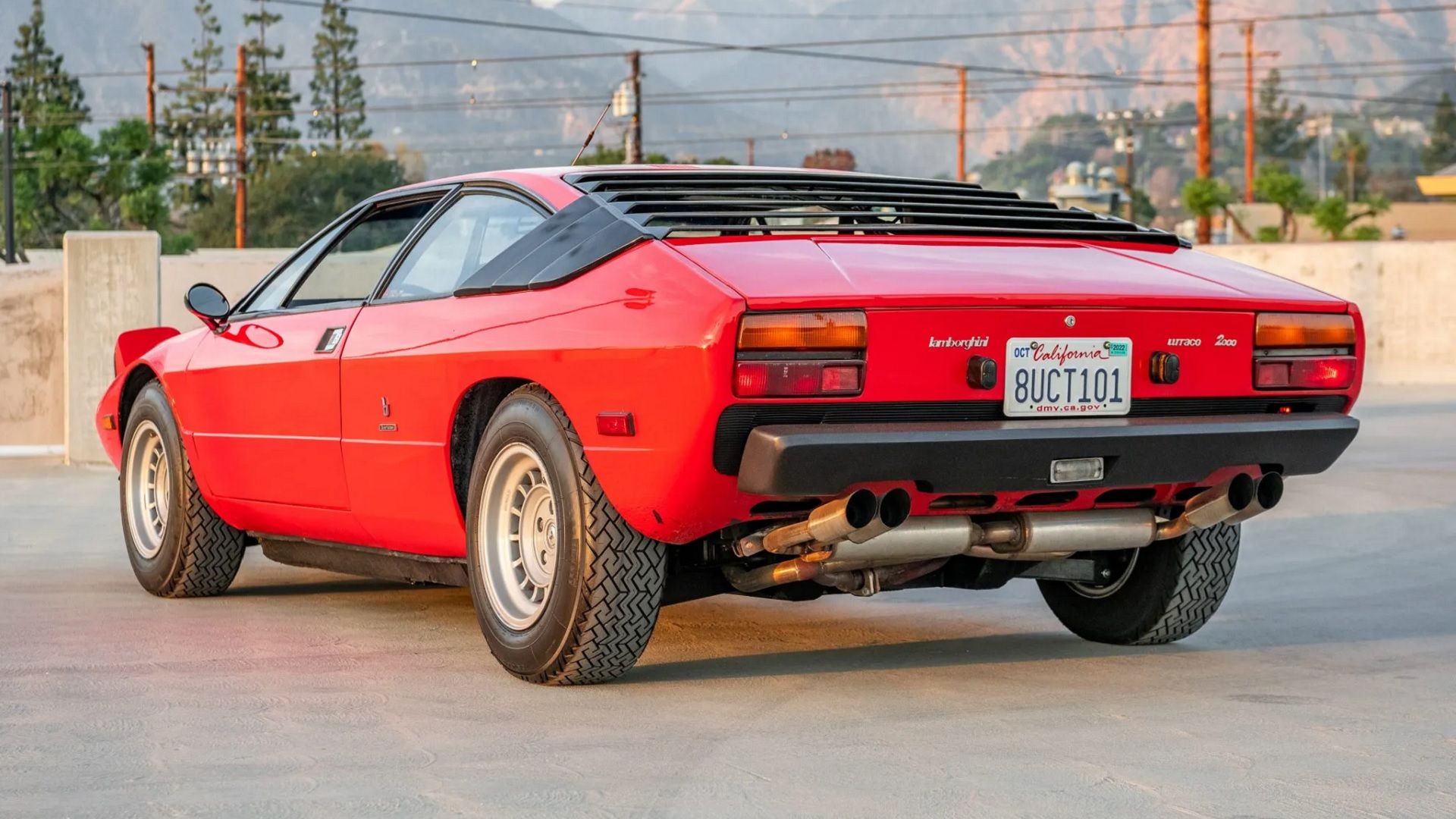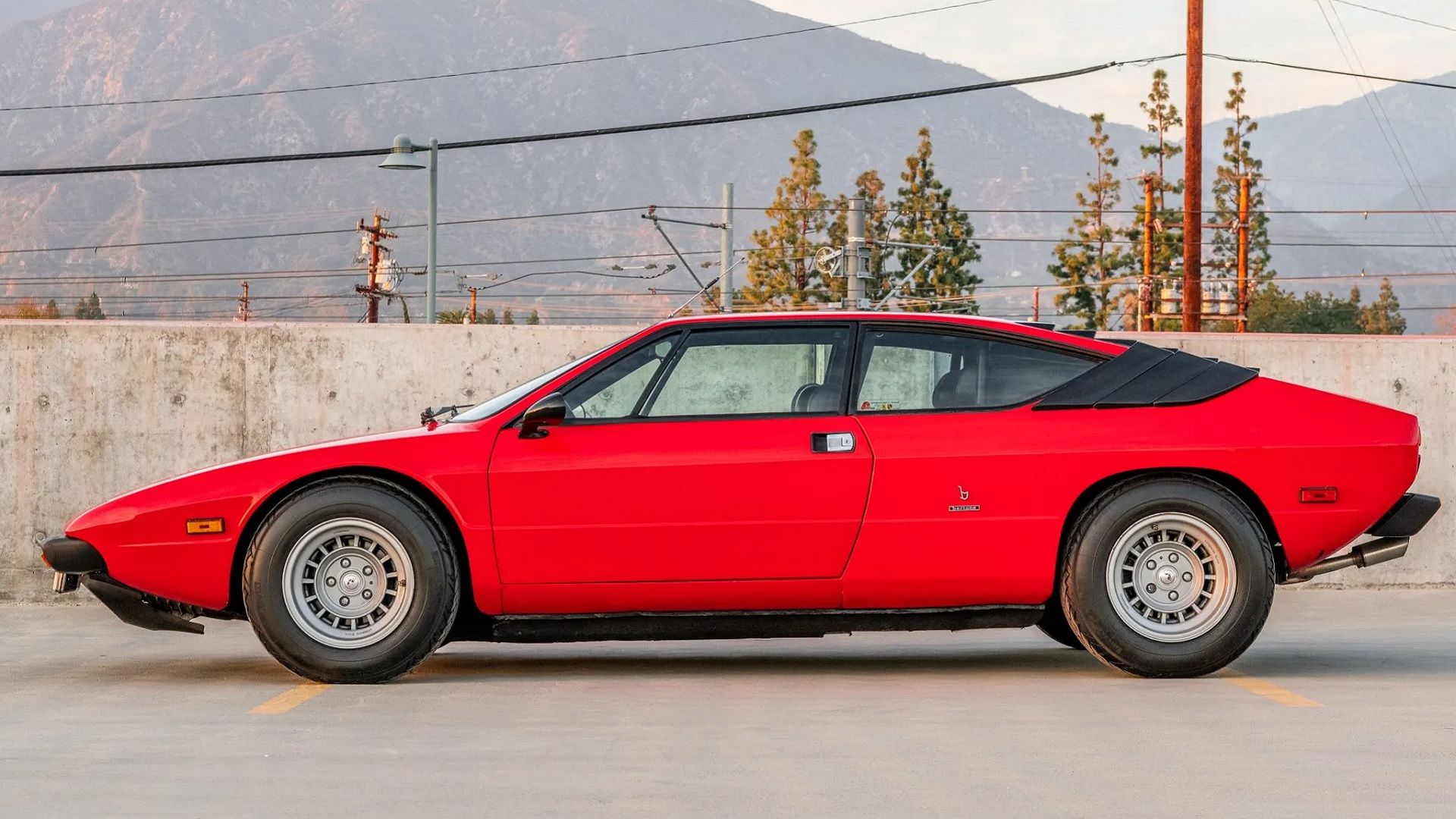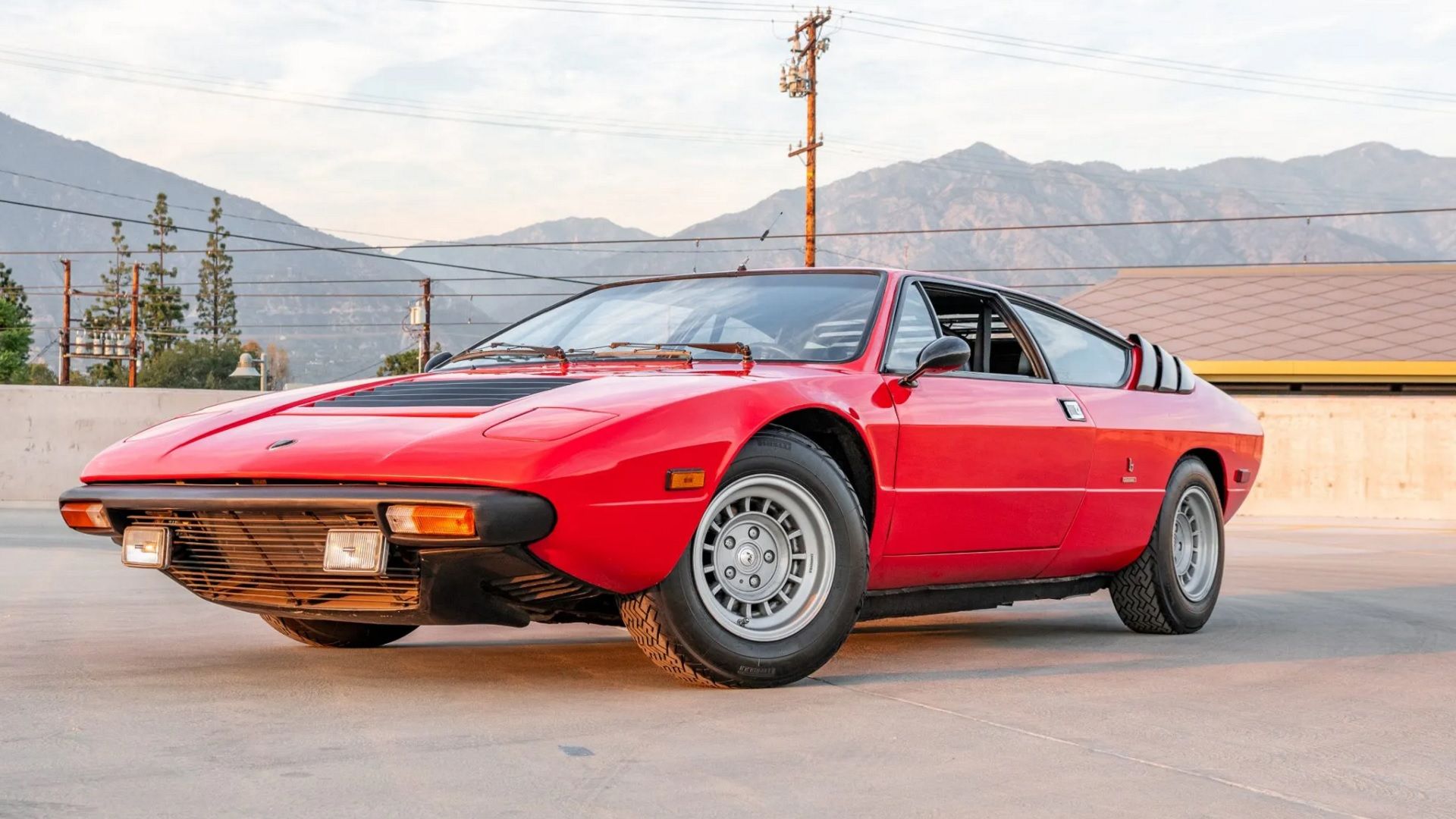The V8 engine has long been a symbol of power and performance, playing a significant role in shaping the automotive world over the past century.
Its distinctive layout, featuring eight cylinders arranged in a V-shape, has made it a favorite among car enthusiasts and manufacturers alike. From American muscle cars roaring down highways to sleek European supercars carving through mountain roads, the V8 has been a common choice for delivering high performance, speed, and that unmistakable engine growl.
Traditionally, the V8 has been associated with top-tier, high-performance vehicles. Whether in the form of a classic American muscle car like the Ford Mustang or a luxury supercar like the Ferrari, the V8 was often reserved for the most powerful models in a manufacturer’s lineup.
These engines were built to deliver serious horsepower, making them the go-to option for anyone seeking thrilling acceleration and speed.
However, the 1970s saw a unique and somewhat surprising trend emerge in the automotive industry—particularly in Italy, a country known for its supercar heritage. While American automakers were using V8 engines to create powerful muscle cars, some Italian manufacturers decided to take a different approach.
Rather than restricting the V8 to their top-of-the-line models, they started using it in some of their entry-level vehicles. This was an unusual move, considering the V8’s reputation for being a premium engine, but it allowed these manufacturers to offer a more accessible taste of V8 performance to a wider audience.
Italy, with its rich automotive history and passion for engineering, was at the forefront of this shift. Companies like Ferrari, Maserati, and Lancia began experimenting with V8 engines in cars that weren’t necessarily positioned as top-tier supercars.
These engines, though smaller in displacement and power compared to their American counterparts, were meticulously engineered and offered a unique blend of performance, refinement, and innovation.
One reason for this shift in the Italian market was the growing competition within the sports car segment. Italian automakers were looking for ways to stand out from their rivals, and one way to do that was by offering cars with V8 power at a more affordable price point.
These cars weren’t meant to compete with the raw muscle of American V8s but instead offered a more refined driving experience, combining the thrill of a V8 engine with the craftsmanship and elegance of Italian design.

This period also gave birth to some of the rarest and most fascinating V8 engines ever produced. Unlike the mass-produced American V8s, these engines were often produced in limited numbers, making them rare finds even in their time.
Their uniqueness wasn’t just in their scarcity but also in their design and engineering. Italian automakers approached V8 engines differently, focusing on balance, high-revving capabilities, and smooth power delivery.
These engines became prized possessions for collectors and enthusiasts, not just because of the cars they powered but also for their mechanical ingenuity.
However, these rare V8 engines were not without challenges. The 1970s was a decade marked by stricter emissions regulations and an energy crisis, which forced automakers to rethink engine design and fuel efficiency.
As a result, some of these rare Italian V8s were produced in very limited runs before being phased out in favor of smaller, more efficient engines.
This has only added to their allure over the years, as they represent a unique moment in automotive history—a time when performance was king, but the winds of change were beginning to blow.
The 1970s was a remarkable era for V8 engines, particularly in Italy, where manufacturers visualize new ways to bring V8 power to the masses.
The rarest V8 engines from this period are not just historical curiosities; they are a few to the creativity and innovation of an industry in flux.
Today, these engines stand as prized relics of a time when the V8 was, both in terms of its accessibility and its design, offering a look into the past while continuing to inspire admiration from car enthusiasts around the world.
How Tax Hikes Transformed Italian Supercars in the 1970s
The 1970s marked a challenging time for the performance car industry, particularly in Italy. A combination of global events, such as the oil crisis and rising insurance costs, created a perfect storm that affected sports car sales.
As fuel prices soared, many car enthusiasts found it harder to justify the expense of high-performance vehicles, leading to a decline in demand for traditional sports cars.
In response to these economic pressures, car manufacturers had to rethink their strategies. To attract budget-conscious buyers, they began to limit the performance capabilities of their models. The era of the powerful muscle car came to an abrupt end, as automakers shifted their focus from speed to affordability.
This meant that while performance was reduced, prices remained high compared to the more prosperous 1960s, leaving many drivers dissatisfied.
Italy, known for its iconic supercars, was not immune to these challenges. The Italian government implemented heavy taxes aimed at promoting environmental responsibility.
This was part of a broader initiative to reduce emissions and encourage more efficient vehicles. One of the most impactful measures was the introduction of steep taxes on cars with engines larger than 2.0 liters.
While vehicles with smaller engines were subject to a 20% value-added tax (VAT), those exceeding the 2.0-liter mark faced a hefty 38% tax rate.
This policy had significant consequences for Italian manufacturers, many of whom specialized in high-performance vehicles with larger engines.
To navigate the new tax landscape, several companies began fitting their supercars with smaller, less powerful V8 engines.
By doing this, they could avoid the increased tax burden while still offering vehicles that were somewhat appealing to their performance-oriented customer base.
While this shift allowed manufacturers to maintain some semblance of speed, the transition was not without its complications.
The new, smaller V8 engines often struggled to deliver the same thrilling performance that enthusiasts had come to expect from Italian supercars. As a result, the driving experience was altered, and many fans felt a sense of loss as the heart and soul of these iconic cars were diluted.

Furthermore, the focus on smaller engines often led to compromises in design and engineering. The allure of Italian craftsmanship, known for its meticulous attention to detail and performance, was sometimes overshadowed by the need to produce cars that complied with the new tax regulations.
This meant that while manufacturers could still claim to offer performance models, they were often lacking the raw power and excitement that had defined previous generations.
Despite these challenges, Italian automakers showcased remarkable resilience and creativity during this period. They began to innovate in other areas, lightweight materials and advanced engineering techniques to enhance performance, even with smaller engines.
This period led to the development of cars that, while different, still carried the spirit of Italian automotive passion.
By the late 1970s, the automotive landscape was beginning to change once more. As global fuel prices stabilized and economic conditions improved, manufacturers started to visualize the idea of larger, more powerful engines again.
However, the legacy of the 1970s remained, as the industry had learned to adapt to challenges in ways that would influence future designs.
The tax hikes imposed by the Italian government in the 1970s had a profound impact on the supercar industry. Automakers were forced to pivot and innovate, resulting in a new generation of smaller, less powerful V8 engines.
While this transition brought about significant challenges and a sense of loss among enthusiasts, it also showcased the resilience of the industry and set the stage for the next chapter in Italian automotive history.
As manufacturers navigated this complex landscape, they laid the groundwork for the powerful supercars that would emerge in the decades to come.
The Rare 2.0-Liter Lamborghini V8: A Unique Chapter in Automotive History
The 1970s was a transformative decade for the automotive industry, marked by challenges that forced manufacturers to rethink their designs and offerings. Among the most affected were supercar brands like Lamborghini and Ferrari, known for their powerful V8 and V12 engines.
With rising taxes and economic pressures, these manufacturers faced the difficult task of adapting to a new reality where larger engines became a financial burden for buyers.
In Italy, the government imposed heavy taxes on vehicles with engines larger than 2.0 liters. This shift meant that cars equipped with bigger engines faced a 38% tax, while those under the threshold were only subject to a 20% value-added tax (VAT).
As a result, luxury carmakers like Lamborghini had to find innovative ways to appeal to cost-conscious customers. One of the solutions was to develop smaller engines that could evade the hefty tax penalties while still providing a semblance of performance.
Lamborghini responded to this challenge with the introduction of the P200, a tiny 2.0-liter V8 engine. This engine was specifically designed to be fitted into the Lamborghini Urraco, which was first launched in 1970.
The Urraco was initially offered with a larger 2.5-liter V8, but to comply with the new tax regulations, Lamborghini engineers reduced the bore size from 3.38 inches to 3.04 inches, resulting in the smaller 2.0-liter displacement.
Despite the advantages of tax savings and the inclusion of a driver-friendly five-speed manual gearbox, the Urraco P200 struggled to find its market.
Only 66 units of this model were ever produced, making it the rarest V8 engine of the 1970s. This rarity can be attributed to several factors, including the perception of a Lamborghini with a small engine.
For many potential buyers, the idea of a Lamborghini powered by a 2.0-liter engine simply didn’t resonate. The brand was synonymous with high-performance and luxury, and a smaller engine felt out of place.
While the P200 offered respectable power figures—182 horsepower and 130 lb-ft of torque—it lacked the aggressive performance expectations that typically came with the Lamborghini name.
Enthusiasts and buyers were often hesitant to invest in a supercar that didn’t deliver the kind of thrilling experience they were looking for. As a result, the Urraco P200 never gained the popularity its larger-engine siblings enjoyed.
The rarity of the P200 also stems from its limited availability. It was primarily sold in Italy, further narrowing its potential customer base.
For many Lamborghini fans, the allure of owning a supercar often hinged on its performance and sound, elements that a 2.0-liter engine could struggle to deliver convincingly. The image of a Lamborghini with a diminutive engine didn’t help its sales prospects, even with the financial advantages it offered.
Despite its lack of commercial success, the Lamborghini P200 V8 holds a unique place in automotive history. It serves as a reminder of the creative adaptations car manufacturers had to make in response to external pressures.

The P200 represents a fascinating intersection of performance, taxation, and market dynamics, showcasing how even the most iconic brands must adapt to survive.
Today, the P200 is highly regarded among collectors and enthusiasts for its rarity and historical significance. It stands as a symbol to Lamborghini’s ability to innovate in challenging times, even if that innovation meant downsizing an engine that was once synonymous with raw power.
While the world of performance cars has moved on to embrace larger, more powerful engines once again, the 2.0-liter Lamborghini V8 remains a curious and intriguing chapter in the story of supercars.
The Lamborghini P200 V8: A Small Engine with Big Ambitions
The Lamborghini P200 V8 may be small, but it packed a surprising punch. This engine was capable of producing 182 horsepower and 130 lb-ft of torque, which was impressive given the lightweight nature of the Urraco it powered.
Weighing in at just 2,750 pounds, the Urraco didn’t require an overly powerful engine to deliver an exhilarating driving experience.
However, despite its decent performance, the P200 V8 didn’t achieve the sales success Lamborghini had hoped for, suggesting that buyers were looking for something more.
One of the reasons the Urraco was able to maintain its lightness was the design of the P200 V8 itself. The engine was constructed primarily from lightweight aluminum, with both the engine block and cylinder heads made from this material.
Its compact size helped keep the over weight down, contributing to better handling and agility on the road. Additionally, the mid-mounted engine layout, similar to the higher-powered versions of the Urraco, played a crucial role in optimizing the car’s weight distribution. This setup enhanced the driving dynamics, allowing the car to handle more responsively.
At a time when fuel injection was not yet widespread, the P200 V8 relied on two four-barrel Weber carburetors. This choice of fuel delivery added character to the engine, providing a throaty sound that resonated with driving enthusiasts.
To manage emissions effectively, Lamborghini engineered the V8 to run at a compression ratio of 8.6:1. The engine also featured a single overhead camshaft design, which reduced inertia and improved efficiency compared to a traditional overhead-valve layout.
For lubrication, the P200 V8 employed a wet sump oil system, which is more common in road cars than the dry sump system often found in race cars.
In a wet sump system, the oil pan is positioned below the engine, allowing oil to collect and circulate during normal driving.
Although this system is simpler, it doesn’t perform as well under extreme conditions like heavy cornering, where a dry sump system would typically excel.
Despite its technical merits, the Urraco P200 struggled in the marketplace. Production of this model ended in 1979, coinciding with the discontinuation of the Urraco itself.
However, the rarity of the P200 V8 has made it a sought-after collector’s item today. With only 66 units ever produced, this engine is the rarest production V8 from the 1970s.
As of 2024, the value of the Urraco P200 has increased significantly, making it an intriguing option for collectors. One example that was imported to the U.S. recently failed to meet its reserve price on Bring a Trailer, despite reaching $78,000 during bidding.
This particular car had only 23,000 miles on it and featured a striking red exterior that had been refreshed, showcasing its allure even in the collector’s market.
While the Urraco P200 may not have achieved commercial success in its time, it stands out as a fascinating piece of automotive history.
It combines the prestige of the Lamborghini name with the uniqueness of a small-displacement V8 engine. For enthusiasts and collectors, the Urraco P200 represents an interesting blend of engineering and rarity, making it a cool and relatively affordable supercar choice given its exclusivity.
In a era dominated by larger, more powerful engines, the P200 serves as a reminder that sometimes less truly is more.
Ferrari’s Successful Small V8: The 208 GT4
While Lamborghini struggled with its 2.0-liter V8 in the Urraco, Ferrari enjoyed much greater success with its own small V8 engine. Featured in the Ferrari 208, this engine was produced from 1975 to 1980 and became a popular choice among enthusiasts.
With a power output of 170 horsepower and 125 lb-ft of torque, the Ferrari V8 had a similar design to Lamborghini’s P200, using a pair of carburetors and mounted in the middle of the vehicle for optimal balance.
The sales figures for the Ferrari 208 GT4 speak for themselves. Over its five-year production run, Ferrari managed to sell 840 units equipped with the 2.0-liter V8. This number is more than ten times the amount of Urraco P200s sold by Lamborghini, showcasing Ferrari’s effective marketing and the brand’s strong reputation in the performance car market.

This success further increased when considering the 2.0-liter engine found in the faster 208 GTB model, produced between 1982 and 1985.
Ferrari’s commitment to innovation didn’t stop at the initial design. The Italian manufacturer recognized that the small V8 had untapped potential. To the engine’s performance, Ferrari equipped it with a turbocharger, which transformed the power output significantly. With the addition of forced induction, the engine was able to produce 220 horsepower and 177 lb-ft of torque, sending even more power to the rear wheels.
This modification not only improved performance but also made the car more appealing to buyers looking for a thrilling driving experience.
While 437 units of the turbocharged GTB were produced, it still falls short of the numbers achieved by the 208 GT4. However, the rarity of both models makes them highly sought after by collectors and enthusiasts alike.
The Ferrari 208 GT4 and GTB embody the spirit of Italian engineering, combining power, agility, and style into a compact package that resonates with driving enthusiasts.
The Urraco P200, despite its limited sales, remains an interesting option for those seeking a unique and relatively efficient Italian 2+2 supercar.
With only 66 examples ever made, it stands out in the automotive world for its exclusivity. However, for buyers interested in a more proven performance car, the Ferrari 208 offers a compelling alternative.
Both the Ferrari and Lamborghini small V8s represent a fascinating chapter in automotive history, illustrating how different approaches to market challenges can lead to varied outcomes.
While Lamborghini’s P200 struggled, Ferrari’s small V8 thrived, proving that sometimes less is more in the segment of high-performance cars.
Ferrari’s ability to adapt and innovate with its 2.0-liter V8 engine highlights the brand’s resilience in a challenging market. The success of the 208 GT4 and its later turbocharged sibling showcases not only the engineering prowess of Ferrari but also the enduring appeal of small-displacement performance engines.
For those looking to own a piece of this history, both models offer a unique blend of rarity, performance, and Italian flair. Whether you’re a seasoned collector or a passionate enthusiast, the Ferrari 208 is worth considering for its legacy and exciting driving experience.
